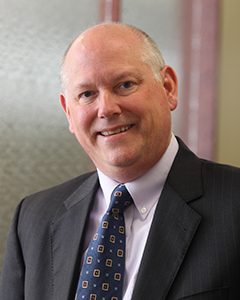DOL: Tread Carefully When It Comes to ESG Investing

Proponents of Environmental, Social, and Corporate Governance (ESG) investing are probably not big fans of the recent guidance issued by the U.S. Department of Labor (DOL) .
On November 13, the DOL announced a final rule intended to provide clear regulatory guideposts for fiduciaries of private-sector retirement and other employee benefit plans in light of recent trends involving ESG investing – which, as the name indicates, revolves around measuring the sustainability and societal impact of an investment, in order to determine the future financial performance of that investment.
Falling under the ESG banner are such factors as a company’s climate change policies, carbon footprint, recycling strategies, ethical supply chain sourcing, diversity and inclusion practices in hiring and its board of directors/management team, and transparency in shareholder communications.
There are no big surprises in the DOL’s final rule — which essentially says to follow the Employee Retirement Income Security Act of 1974 (ERISA), be a faithful fiduciary and choose investments without compromising investment selection based on factors other than financial and economic metrics related to risk and return. But one little surprise is that the DOL removed the “ESG” nomenclature from the final rule, and simply codified the fact that appropriate financial factors must be utilized in selecting plan investments.
The new rule stresses the “pecuniary” aspect of investment management when it comes to retirement plans. What this means is that retirement plan fiduciaries should only use “pecuniary” factors – those that have a material, demonstrable impact on performance — when assessing investments of any type.
The final rule does leave some room for ESG types of investments, but this assumes that they are assessed in a purely economic manner and that their financial features alone make them prudent investments. I note that the final rule does not prohibit the selection of a fund that uses ESG factors as a plan’s qualified default investment alternative (QDIA); however, a fund selected as the QDIA must be assessed using purely pecuniary factors that are directly material to its financial performance.
A further note: The final rule states that a fund is not appropriate as a QDIA if its objectives include non-pecuniary factors; for example, addressing climate change in and of itself, rather than addressing the impact that climate change can have on investors in terms of economic and financial outcomes.
The DOL expects the final rule will ultimately result in higher returns by preventing fiduciaries from selecting investments based on non-pecuniary considerations and requiring them to base investment decisions solely on financial factors. The final rule and a summary of the rule’s key provisions are available on the Employee Benefits Security Administration (EBSA) website. The rule will be effective 60 days after publication in the Federal Register – that is, January 12, 2021 — but plans will have until April 30, 2022 to make any changes to certain QDIAs, where necessary to comply with the final rule.
In general. the DOL is expecting compliance with the rule on a “go forward” basis. It is not going out of its way to retroactively apply the final rule; however, it will enforce the rule prospectively. The DOL also took to heart the fact that at least one commenter stated that more time would be required to review and potentially change any funds that are QDIAs.
So what should you be doing now? Review your current investment selection and determine whether or not your plan contains any investment funds that have been selected based on non-pecuniary factors. Action will need to be taken to either remove these funds or justify continued use.
About the Author
